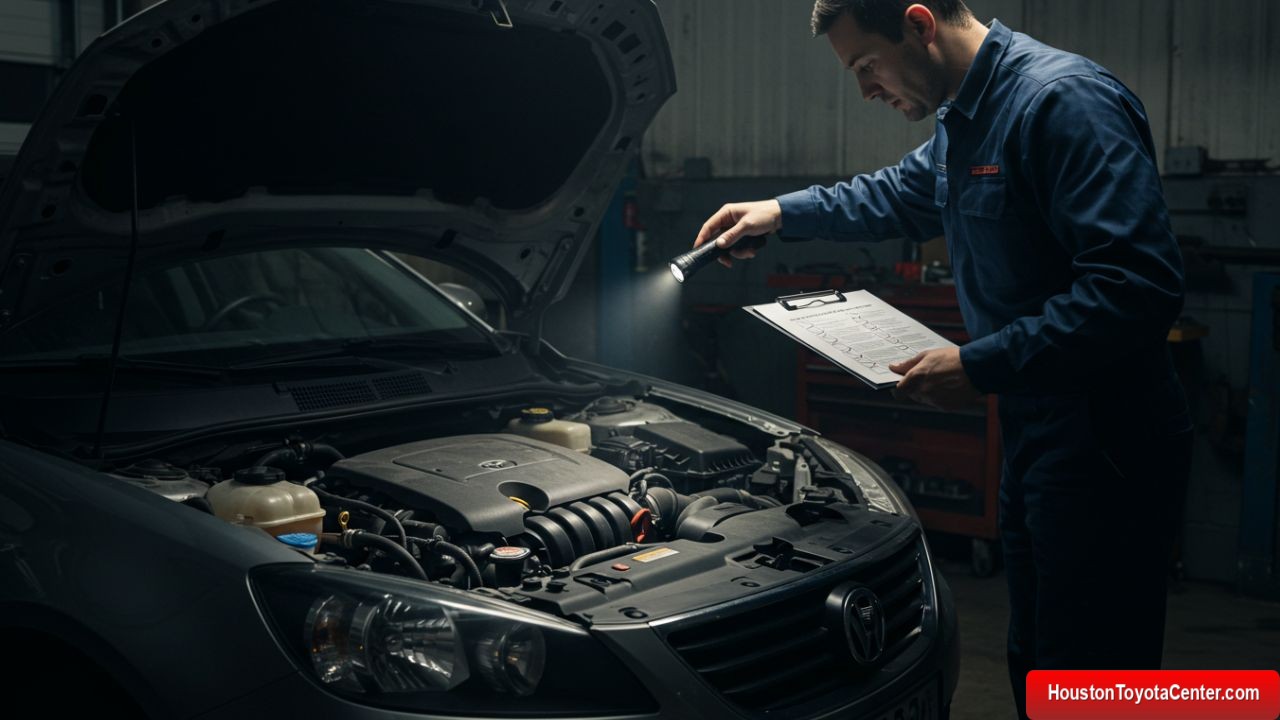When purchasing a vehicle—whether new or used—doing your due diligence can save you from making a costly mistake. A shiny exterior and smooth test drive may mask serious underlying issues. That’s why having a thorough pre-purchase inspection checklist is essential for any savvy car buyer.
Whether you’re buying from a dealership, private seller, or online platform, this guide will help you make an informed, confident purchase.
Why Pre-Purchase Inspections Matter
Imagine falling in love with a car, only to discover a few weeks later that it needs a new transmission. Or that it was previously involved in a serious accident. Pre-purchase inspections prevent unpleasant surprises by identifying mechanical, cosmetic, or legal red flags before you commit.
Benefits include:
FREE: Quickly identify and understand problems with your vehicle 🚘
CLICK HERE- Avoiding costly repairs
- Confirming the vehicle’s value
- Ensuring your safety
- Strengthening negotiation power
- Detecting hidden or undisclosed damage
Who Should Do the Inspection?
You can perform a basic inspection yourself, but for peace of mind, it’s best to hire a certified mechanic or third-party inspection service. Many automotive shops offer this service for $100–$250—money well spent to avoid thousands in unexpected repairs.
Full Pre-Purchase Inspection Checklist
Here’s a comprehensive breakdown of every area you or your mechanic should inspect before buying a vehicle:
✅ Vehicle Documentation and History
| Item | What to Check |
|---|---|
| VIN Number Match | VIN on dashboard, engine block, and title must match. |
| Title Status | Clean, salvage, rebuilt, or lien? |
| Ownership History | Number of previous owners. |
| Accident Reports | Look for collision history on Carfax/AutoCheck. |
| Maintenance Records | Regular oil changes, major repairs, recalls. |
| Odometer Consistency | Verify mileage against service records. |
✅ Exterior Condition
| Area | What to Look For |
|---|---|
| Body Panels | Uniform gaps, misalignment, signs of repainting. |
| Rust | Pay attention to wheel wells, under doors, chassis. |
| Windshield & Windows | Cracks, chips, proper seal and function. |
| Tires | Even tread wear, matching brands, production date. |
| Lights | All headlights, brake lights, and signals functioning. |
| Underbody | Check for fluid leaks, excessive rust, frame damage. |
✅ Interior Condition
| Interior Element | What to Inspect |
|---|---|
| Seats and Upholstery | Rips, stains, unusual wear. |
| Odor | Musty smell may indicate mold or flood damage. |
| Dash & Gauges | Working speedometer, fuel gauge, and warning lights. |
| AC/Heat | Ensure strong airflow and accurate temperature. |
| Infotainment | Radio, Bluetooth, screen, and backup camera functionality. |
| Windows & Locks | All doors, locks, and windows working electronically. |
✅ Engine Compartment
| Component | What to Observe |
|---|---|
| Engine Oil | Check level, color, and for signs of sludge or leaks. |
| Transmission Fluid | Should be pink or red, not burnt or dirty. |
| Coolant | Full, clean, no corrosion in the radiator. |
| Battery | No corrosion on terminals, test voltage if possible. |
| Belts & Hoses | No cracks, swelling, or frays. |
| Leaks | No visible oil, coolant, or brake fluid leaks. |
✅ Test Drive Checklist
During the test drive, focus on functionality, comfort, and unusual behavior.
Start-Up Behavior:
- Does the engine start quickly?
- Are there warning lights on the dashboard?
Engine Performance:
- Smooth idle?
- Hesitation when accelerating?
Transmission:
- Smooth gear changes?
- Delays or clunks?
Steering:
- Responsive and centered?
- No vibrations or noises?
Brakes:
- Car stops in a straight line?
- Any squeaks, grinding, or pulsation?
Suspension:
- Rides smoothly over bumps?
- No excessive bouncing or rattling?
Climate & Infotainment:
- Test heat, AC, and speakers.
- Try Bluetooth, USB ports, and other features.
✅ Electronic Systems
Modern vehicles are loaded with tech. Be sure to test:
- Key fob remote entry
- Push-to-start (if equipped)
- Adaptive cruise control
- Backup camera and sensors
- Lane departure warning
- Tire pressure monitoring system (TPMS)
- Dashboard warning lights
✅ Under the Vehicle
Ask the mechanic to place the vehicle on a lift or jack stands to inspect the undercarriage.
Look for:
- Frame damage or bends
- Oil or transmission fluid leaks
- Exhaust system rust or holes
- Suspension and CV boots condition
✅ Signs of Previous Repairs or Accidents
Red flags may include:
- Mismatched paint
- Overspray on trim or rubber seals
- Wavy body panels
- Aftermarket welds or rivets
- Non-OEM parts or irregular bolts
Bonus: Questions to Ask the Seller
Whether you’re buying from a private seller or a dealership, these questions can be telling:
- Why are you selling the vehicle?
- Has it ever been in an accident?
- Do you have the maintenance records?
- Who performed most of the service?
- Is there a warranty or return policy?
- Can I take the car for an independent inspection?
- Are there any issues I should know about?
Common Scams to Watch Out For
- Odometer rollback: Digital odometers can be tampered with.
- Title washing: Hiding a salvage title by moving the vehicle between states.
- Curbstoning: Unlicensed dealers posing as private sellers.
- Flood-damaged cars: Often sold after hurricanes or heavy storms.
If the deal feels too good to be true, it probably is.
Used Car Buying Tips
- Always test drive: Even if the car “looks perfect.”
- Avoid emotional buying: Don’t rush into a purchase.
- Compare prices: Use resources like Kelley Blue Book, Edmunds, or NADA.
- Use a checklist: Print this guide or save it on your phone.
- Bring a friend: A second opinion can catch what you miss.
Red Flags That Should Make You Walk Away
| Red Flag | Why It Matters |
|---|---|
| Seller refuses inspection | Hiding serious issues. |
| Vehicle has salvage/flood title | Often indicates significant past damage. |
| Engine knocks or smokes | Costly repairs ahead. |
| Leaking fluids | Potential safety or mechanical failure. |
| Dashboard warning lights on | Especially ABS, airbag, check engine. |
Should You Always Get a Professional Inspection?
If you’re buying a new car, this might not be necessary—but for anything used, it’s highly recommended.
For classic cars, vintage restorations, or exotic imports, you might want a specialist with experience in that brand or vehicle type.
Digital Tools That Can Help
| Tool | Function |
|---|---|
| Carfax/AutoCheck | Vehicle history reports |
| Kelley Blue Book (KBB) | Estimate fair market value |
| OBD2 Scanner | Reads error codes from engine computer |
| Mobile Inspection Services | On-site inspections and reports |
Final Thoughts
A pre-purchase inspection may take time and cost a bit upfront—but it’s one of the most critical steps in the car buying process. With this checklist in hand, you’re not just buying a vehicle—you’re making a smart, well-informed investment.
Never let appearances or a pushy seller rush your decision. Take control. Ask questions. Get the facts. The road ahead will be much smoother because of it.
Print-Friendly Summary Checklist
Use this printable section to take with you or hand to a mechanic.
☑ VIN matches on title and vehicle
☑ No salvage/flood title
☑ Clean Carfax or AutoCheck
☑ No check engine light
☑ Tires evenly worn
☑ No rust underneath
☑ No fluid leaks
☑ Smooth idle and acceleration
☑ All electronics functional
☑ No visible signs of previous accident repairs
☑ Passed independent mechanic inspection


Leave a Reply